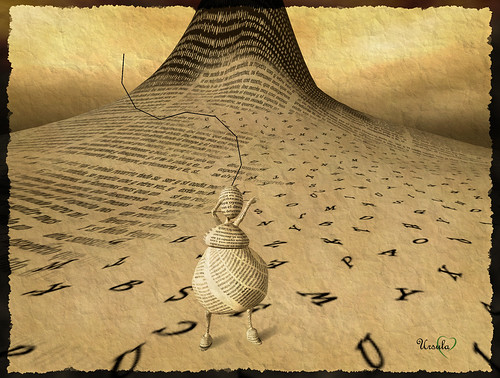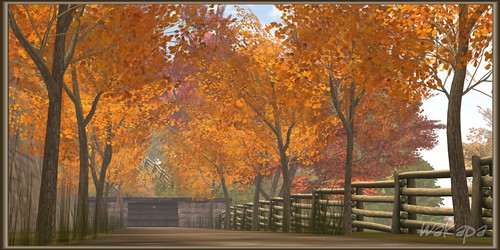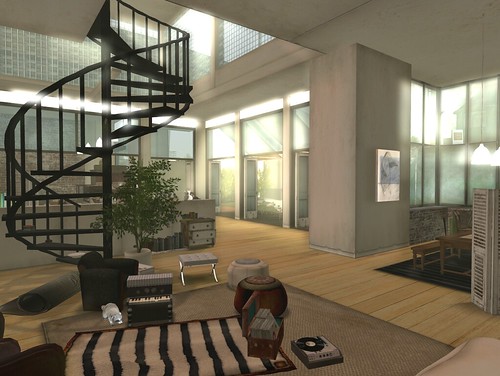Second Life is a killer app for Oculus VR. Now, before you skip ahead to post a comment about how SL has been overrun by furries and 14 year olds, take a moment to scroll through these screenshots. Better yet, look through the Best of SL Flickr group I scraped these from. Post processing aside, these are the kinds of experiences people continue to build in Second Life to this day. The quality, content and creativity of these screenshots are Reason # 1.
Despite all rumors to the contrary, it’s still a massive community. It boasts a huge number of active monthly visitors, many of whom are incredibly passionate and dedicated. That’s reason #2.
Believe it or not, the technology has come a long ways over the past several years. The passionate community does make a lot of noise (a lot of it justified) about the need for even more improvements, or dissatisfaction with progress, but the truth is Second Life is *nothing* like what it was when I first logged in June 2006. Import mesh, dynamic shadows, dynamic atmosphere, and now enhanced materials – it has improved dramatically. There is, of course, still room for improvement, and there always will be. But it is actually a pretty powerful technology. That’s #3.
Reason #4 is that Second Life is a perfect fit because it is and always has been about virtual reality. Linden Lab, the creators of Second Life first built ‘the Rig,’ which is rumored to be a type of VR device. Residents of SL think of it and refer to the world as virtual reality. The primary goal of just about every prim and mesh rezzed throughout SL is about achieving immersion. Rift fits SL like a glove.
#5 Second Life is the metaverse. Love it or hate it, SL is the most robust, most advanced, most highly populated representation of the ‘metaverse’ we have available today. Just try building something as vast and popular as Second Life.. I dare you.
#6 It has a vast, functional marketplace for virtual goods, and a strong virtual currency. Just try to create, manage and legally maneuver your way into replicating the SL marketplace. I double dare you. It is phenomenally complex – far moreso than most people give it credit for.

#7 Rift is lonely. Take a stroll around the Tuscany demo, and you’ll feel it. You’re the only one there. The deep sense of immersion only underscores the fact. The multi-player facility of SL offers the opportunity to meet with others, share your work, take a look at what they’ve been working on, and just hang out. Sure, Team Fortress is multiplayer, but sometimes you want to pause the grenade slinging, machine gun toting rally, put the grenade launcher down, and just build stuff together.
Second Life is global. My absolute favorite aspect of working in SL is the opportunity to meet other people from all over the world – spontaneously. I would be working on some project, and suddenly someone would drop in to say hi.. some researcher from Japan who is studying emotional responses to online games. An architect from the Netherlands who wants my advice building a hotel his studio is designing. Or my college friend Ryan Schultz who showed up one day and hundreds of brainstorming conversations later, we co-founded Studio Wikitecture. The fact that emergent projects like Studio Wikitecture could grow from the ether of Second Life should count as another reason, but I’ll bundle all this up as Reason #8.
#9 is Draxtor Despres. Seriously, this guy is a tsunami of energy. If you can watch his new World Makers series and tell me with a straight face that Second Life doesn’t matter, and doesn’t have potential, I’ll eat a virtual humble pie.
Reason #10 is easy – the collaborative in-world building tools. Can you imagine stretching out some prims in VR and designing a structure from *within* the structure? I’m thinking it will eventually look something like this:
I originally thought SL would be a ways off because of the need to achieve 60 fps. However, after spending more time in the Rift, I’ve come to realize that we simply need to revise our thinking about build scale and complexity in order to make it work. A powerful experience in Rift is about small doses of rich experience. A full sim packed with details (thus dropping below 60 fps) wouldn’t even be as interesting as a well designed 30×30 space filled with careful attention to detail. We can get to 60 fps, we’ll just need to keep it on the radar and design for it.
Now, after saying all of this, I want to conclude with a rain-on-the-SL-parade parting thought to consider. While Second Life may very well be a killer app for Oculus Rift, I think it will ultimately be OpenSim that wins the race to first integration if it hasn’t already. This is ultimately where OpenSim can flex it’s open source muscle, insofar as they can far more easily create a custom viewer to accommodate the Rift experience, and their active and passionate community of contributors are much more likely to seize the opportunity to do so first. They can probably take strides in accommodating 60 fps as well. This isn’t a bad thing, it’s an incredible opportunity to win the best of both worlds. The best thing that could happen is for a little competitive spirit to drive development on both fronts.
Either way, this is a killer app for Oculus Rift, and I highly encourage SL and OpenSim developers alike to roll up their sleeves and get started integrating this thing ASAP!
As I’m pasting in this last screenshot, I’m inclined to add a bonus Reason #11, which is the sheer diversity and boundless creativity found in Second Life. There is more totally unique, unprecedented and free-thinking creativity found in Second Life today than there are in the past 5 years of game development’s annual awards winners combined.
That’s what Oculus Rift needs, is fresh thinking. It isn’t about gaming, it’s about experience, creativity, and looking at this technology from a totally unique and fresh perspective. That’s what Second Life is, and always has been, all about.







